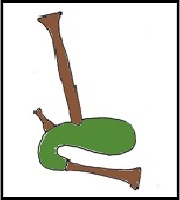The Stonebow and Guildhall (The bow spans High Street). The Stonebow is the south gate of the City, dating from the late 15th Century to early 16th Century. It was built on the site of the Roman South Gate, which remained a medieval gateway for many years, until it was demolished in the late 14th Century for being unsafe. In 1390, Richard II ordered a new gateway to be built to replace the demolished arch. However, the Council and Citizens of Lincoln were slow to act on their King's wishes. Building materials were purchased on a number of occasions, but all disappeared. The new arch was finally completed by William Spencer, a city freemason, over 100 years later, in 1520.
The History of Lincoln Waites
Lincoln Stonebow & Guildhall
Click a picture to enlarge. To return to this page, simply close the image window.
The near part of the East Wing of the Stonebow is mainly 15th century. In 1810 the Council resolved to pull down the Guildhall and build a new, improved hall to meet in (ref: L1/1/1/8, 18 August 1810). Although this notion was soon overturned, the prison wing (on Saltergate) was pulled down in 1842 and rebuilt - to almost match the rest of the Guildhall. The City Council still use the Guildhall today, despite 19th century claims that the building was unsuitable.
In 1829, the Lincoln Gas Light and Coke Company held at least one board meeting in the Guildhall. This was just before they were granted grounds on Newland (at a cost of £105), facing the Brayford Pool, on which to erect their works (ref: L1/1/1/8, 16 June 1829).
The East Wing once contained the City prison and a kitchen, but in 1586 the City bought the house next door and used it as a prison for many years. It can be seen in nineteenth century paintings and prints by Augustus Pugin and others in the Guildhall and Central Library. There were two rooms at ground level, one 13 feet square for men and one 8 feet square for women. Each room had a small iron grated window 2 feet square, at pavement level, facing the narrow Prison Lane (now Saltergate - the street of the Dry Salters). Friends and family of prisoners could see them and talk to them through these gratings and might have passed in food and drink. The gaol was abandoned in 1809 as a new prison had been built at the Session House adjacent to the New Road (Lindum Hill) in 1805. The old gaolhouse was pulled down in 1842 and the whole wing was rebuilt in similar stone to the rest of the Bow.








